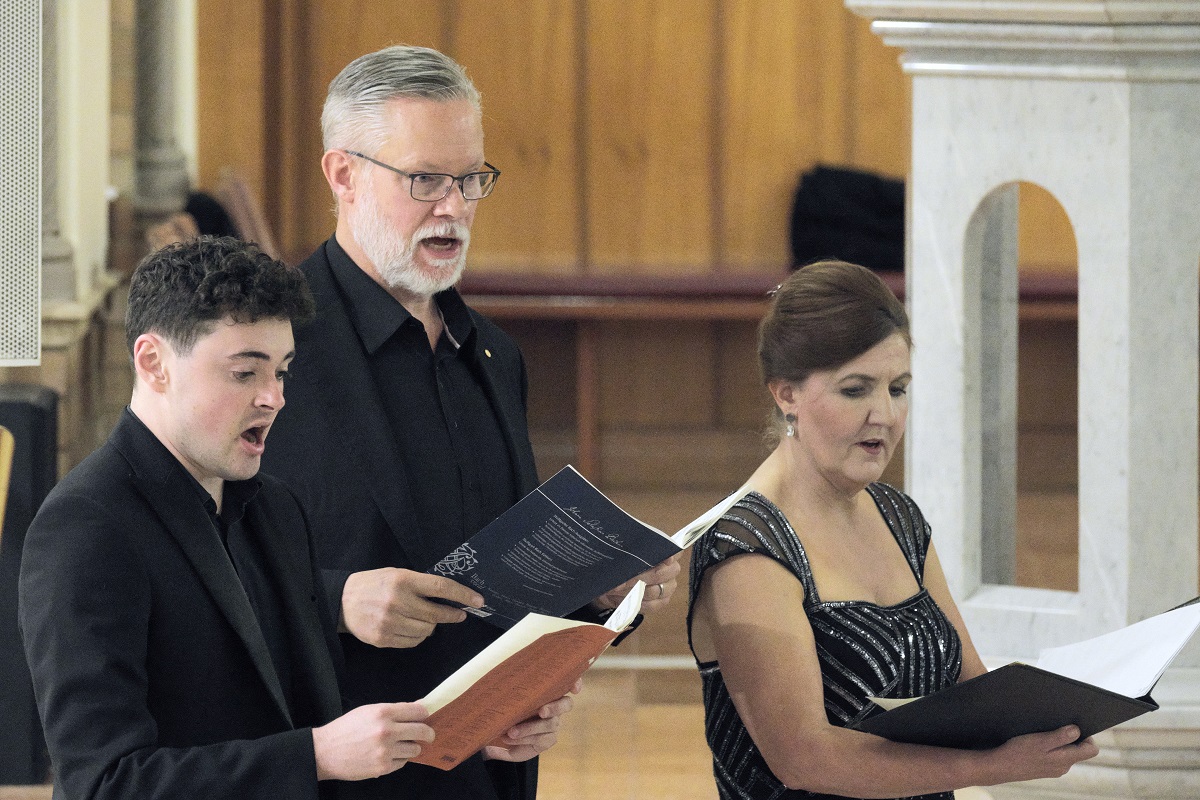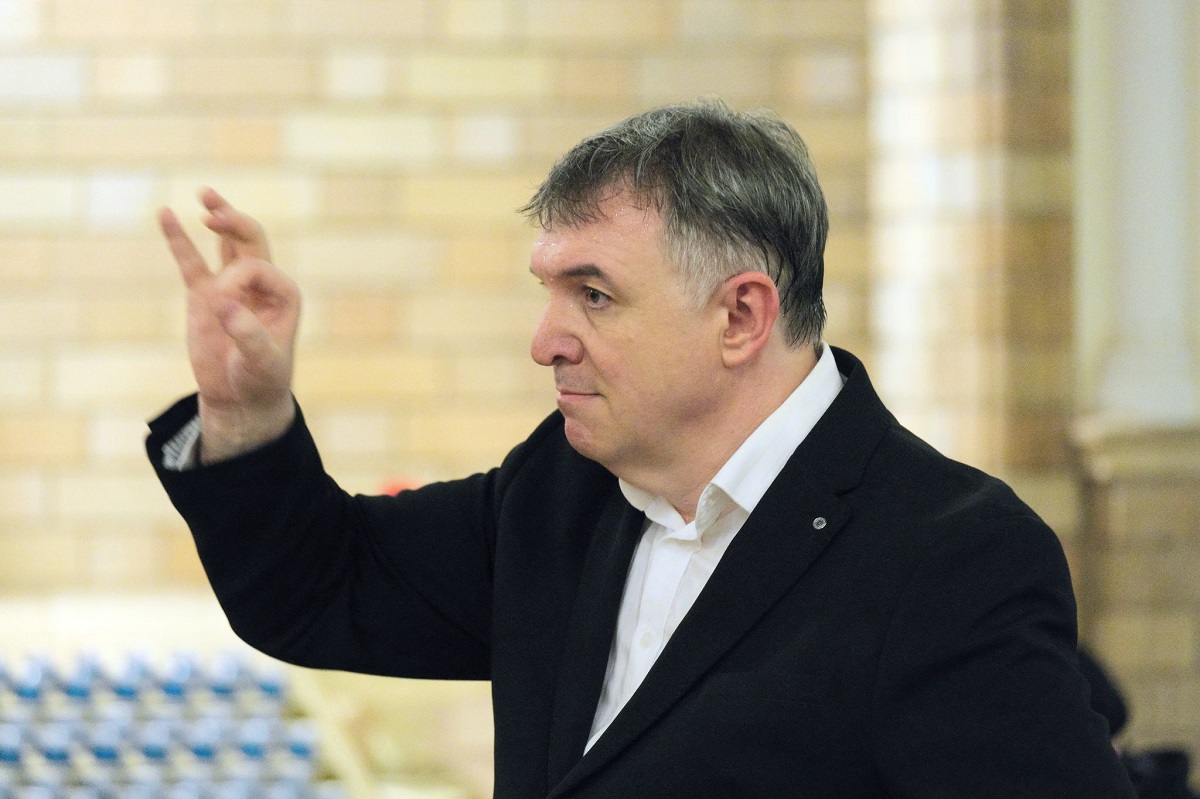
Music / “Advent Cantatas”, Canberra Bach Ensemble. At St Christopher’s Cathedral, Manuka, December 3. Reviewed by HELEN MUSA.
WITH perfect seasonal timing, Andrew Koll and the Canberra Bach Ensemble presented a suite of four Advent cantatas by Johann Sebastian Bach to a near-capacity crowd at St Christopher’s Cathedral.
There was a substantial printed program that sketched the academic background to the cantatas, but for those present, the experience was not at all academic, proving that Bach, the shining “morning star” of composers, is an enduring drawcard.
Artistic director Koll had chosen to take Martin Luther’s “Nun komm, der Heiden Heiland” (“Now come, saviour of the Gentiles”) as his central point. Probably composed in 1523, around 500 years ago last weekend, it was an adaptation of a fourth-century Latin hymn by Saint Ambrose of Milan, set by many composers until it reached the hands of Bach in the early 18th century.

On hand to bring the cantatas to life, was an ensemble of instrumentalists directed by concertmaster Bianca Porcheddu, with as soloists tenor Thomas Hallworth, from Sydney; bass Andrew Fysh; soprano Greta Claringbould and alto Maartje Sevenster, all from Canberra.
Hallworth had the lion’s share of the solo parts, with Claringbould not far behind, but it fell to Fysh to link the chorales and arias with a series of recitatives, which interpreted the coming birth of the Christ Child.

The concert began with the quiet chorale grandeur of BWV 61, the Advent cantata December 2, 1714. Hallworth’s gentle tenor part followed, invoking the arrival of the holy child.
Moving on in time, “Nun komm, BWV, 62”, written for Advent in 1724, saw Fysh, in both his recitative and aria, urge the coming saviour to “fight… Be in the flesh mighty for us”, before the cantata concluded with a forceful unison praise to the Holy Trinity, “Lob sei Gott”(Praise be to God).
The second half of the program began with BWV 36, written for Advent, 1731. Here oboists Kirsten Barry and Fiona McMillan engaged with Claringbould and Sevenster in an exciting musical conversation, after which Hallworth’s beautifully sustained notes in the gentle aria, “love approaches his beloved with gentle and slow steps”, were punctuated with a huge thunderbolt from outside the cathedral.
A noticeable moment in this cantata was Claringbould’ s soprano soprano aria, “Also, with muted, weak voices is God’s majesty honoured,” accompanied by Porcheddu on violin, before the full chorus returned again for a homophonic reprise of “Lob sei Gott.”
In the final part of this afternoon concert, Koll performed a clever sleight of hand by grafting John Hermann Schein’s 1623 Motet 24 from “Israelbrunnlein” (Fountain of Israel) on to the beginning and end of Bach’s 1725 cantata for the annunciation of the blessed Virgin, BWV 1.
The link is in the words, “I am the root and the descendant of David, a bright morning star”, asserting the descent of Jesus from the House of David.
The body of the central cantata was aptly supported by Porcheddu and the instrumentalists in the most complex and enjoyable orchestration of the afternoon. After tenor, bass and soprano recitatives and arias by the tenor soprano and bass, the chorus returned to assert in full voice, “my precious one is the Alpha and Omega”, before an elaborate “Amen” brought the afternoon to an end.
Who can be trusted?
In a world of spin and confusion, there’s never been a more important time to support independent journalism in Canberra.
If you trust our work online and want to enforce the power of independent voices, I invite you to make a small contribution.
Every dollar of support is invested back into our journalism to help keep citynews.com.au strong and free.
Thank you,
Ian Meikle, editor



![For graphic designer Tracy Hall, street art is like any artwork, her canvas has been swapped out for fences and plywood, her medium changing from watercolours to spray paint.
A Canberra resident for 13 years, Tracy has been a street and mural artist for the past five.
Her first exploration into grand-scale painting was at the Point Hut toilets in Banks five years ago. “They had just finished doing up the playground area for all the little kids and the words [of graffiti] that were coming up weren’t family friendly,” she says.
“So I ended up drawing this design and I got approval for the artwork.”
Many of Tracy’s time-consuming artworks are free, with thousands of her own dollars put into paint.
@traceofcolourdesigns
To read all about Tracy's fabulous street art, visit our website at citynews.com.au or tap the link in our bio! 🎨🖌
#canberranews #citynews #localstories #canberrastories #Citynews #localnews #canberra #incrediblewomen #journalism #canberracitynews #storiesthatmatter #canberralocals #artist #streetart #streetartist #StreetArtMagic](https://scontent.cdninstagram.com/v/t39.30808-6/490887207_1225841146218103_6160376948971514278_n.jpg?stp=dst-jpg_e35_tt6&_nc_cat=106&ccb=1-7&_nc_sid=18de74&_nc_ohc=yse5ujF1BOUQ7kNvwE8vMJJ&_nc_oc=AdmACWW3pCwuhoAJjTJgeYL0PrOjZetex1flAsV7seJ8OPT1_w_DCdBrY998OXsAdFw&_nc_zt=23&_nc_ht=scontent.cdninstagram.com&edm=ANo9K5cEAAAA&_nc_gid=M3Eat5CavCFLyQKem8wl7A&oh=00_AfEelLohW-0BM38EPlPqLO_ehfn2HbeGBZ7_42rmOJ7w8w&oe=68079794)




Leave a Reply